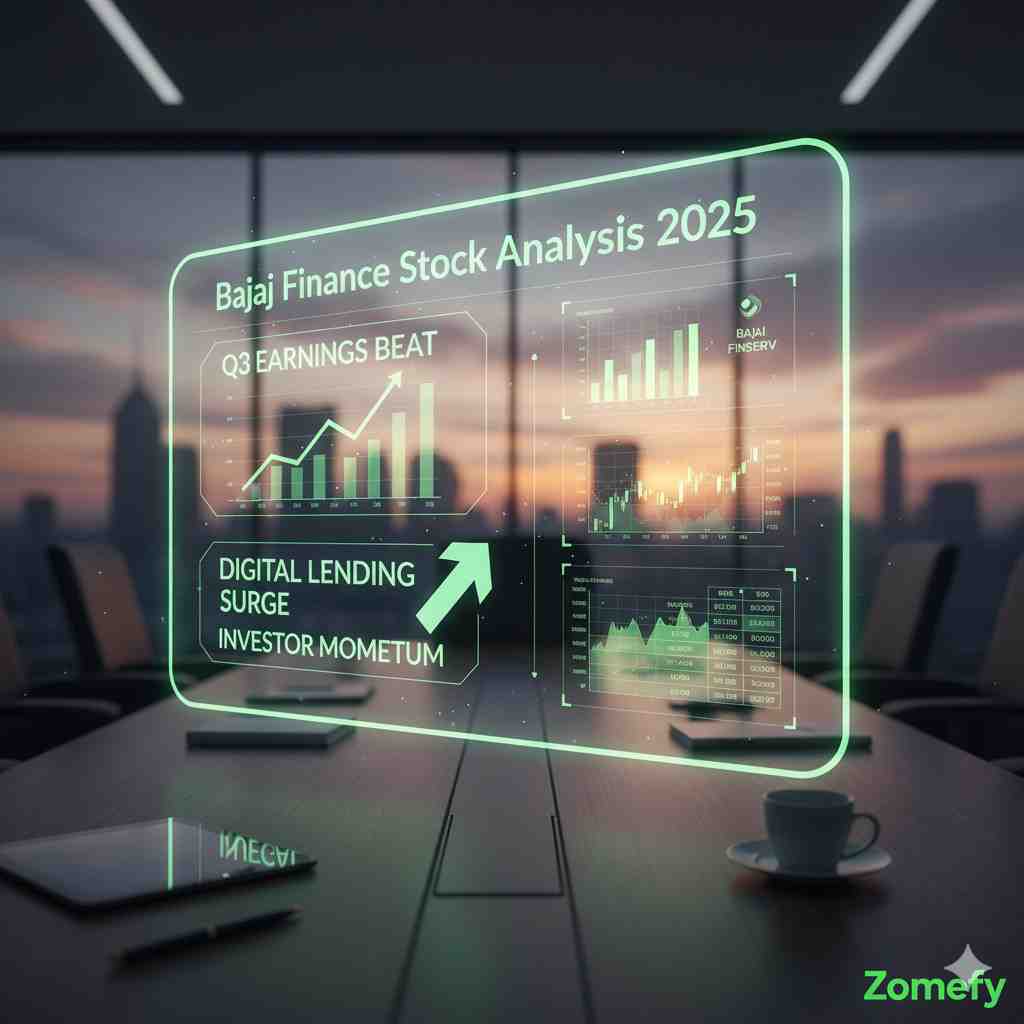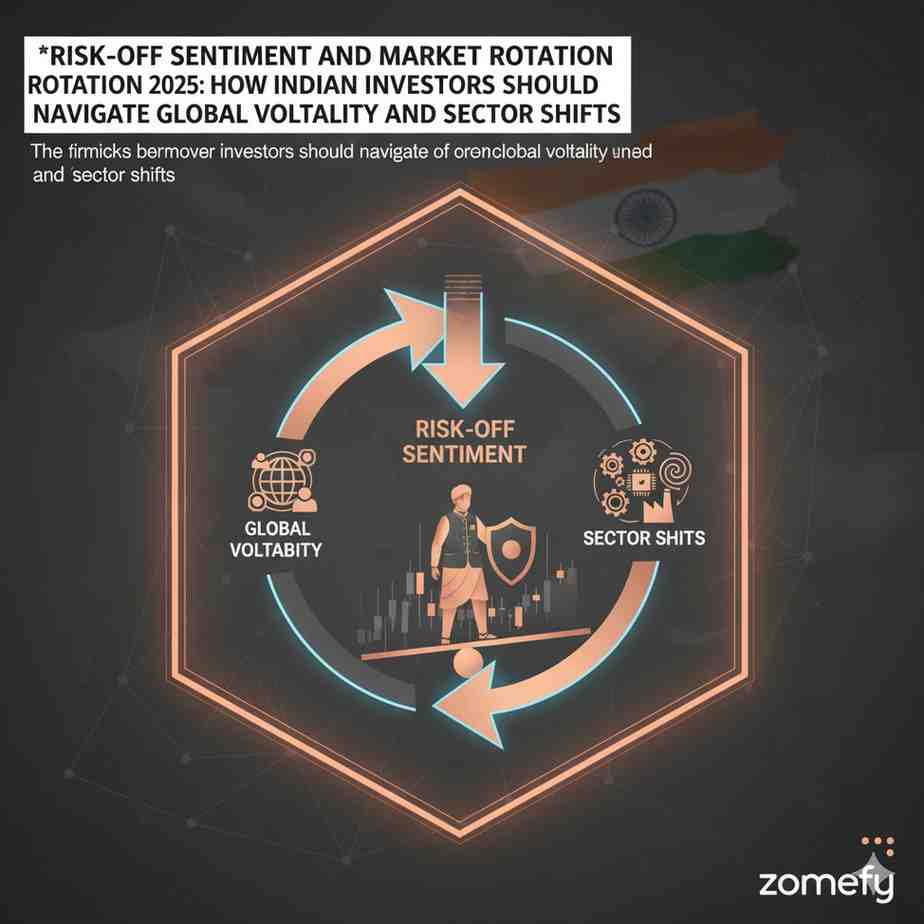ESG Investing in India 2025: How Green Bonds and Climate Finance Are Reshaping Retail Investment Strategies
ESG (Environmental, Social, and Governance) investing has emerged as a transformative force in the Indian financial landscape, reshaping how retail investors and financial professionals approach po...
ESG Investing in India 2025: How Green Bonds and Climate Finance Are Reshaping Retail Investment Strategies
What You Can Do Next
- Read the full article for complete insights
- Save for later reference
- Share with others learning about this topic
Image not available
ESG (Environmental, Social, and Governance) investing has emerged as a transformative force in the Indian financial landscape, reshaping how retail investors and financial professionals approach portfolio construction and capital allocation. By 2025, India’s ESG investing market is projected to grow at a compound annual growth rate (CAGR) of 23.3%, reaching a valuation of over US$4 billion, driven by heightened environmental awareness, regulatory mandates, and evolving investor preferences. Green bonds and climate finance mechanisms are pivotal in this shift, offering retail investors access to sustainable investment avenues that align with India’s ambitious net-zero goals and global climate commitments. This article explores how green bonds and climate finance are influencing retail investment strategies, highlighting key regulatory frameworks, market trends, and actionable insights tailored for the Indian context. We also analyze leading companies, funds, and sectors involved in ESG, providing data-driven comparisons and practical guidance to help investors integrate sustainability into their portfolios effectively.
The Rise of ESG Investing in India: Market Dynamics and Regulatory Landscape
ESG investing in India has transitioned from a niche concept to a mainstream investment approach, influenced by global trends and domestic imperatives. India’s vulnerability to climate change, coupled with increasing investor demand for responsible investing, has catalyzed this growth. According to market forecasts, the Indian ESG investing market is expected to grow from approximately US$1.2 billion in 2024 to over US$4.1 billion by 2030, at a CAGR of 23.3%[2]. This surge is supported by regulatory frameworks such as SEBI’s Business Responsibility and Sustainability Reporting (BRSR) mandate for the top 1000 listed companies and the June 2025 introduction of ESG debt securities guidelines, which standardize disclosures and certification for green, social, and sustainability bonds[5]. These regulations enhance transparency, reduce greenwashing risks, and build investor confidence.
Investor demographics are also shifting. Millennials and Gen Z, who prioritize sustainability, are increasingly influencing retail investment flows. Surveys indicate that around 89% of Indian investors consider ESG factors in their decisions, reflecting a growing integration of ethical considerations with financial analysis[4]. Additionally, ESG funds in India have amassed assets under management (AUM) of approximately ₹10,946 crore, highlighting retail participation in sustainable finance[5].
Metric | 2024 | 2030 (Projected) | CAGR (2025-2030) |
|---|---|---|---|
| India ESG Market Size (US$ Million) | 1,217.9 | 4,109.6 | 23.3% |
| ESG Fund AUM (₹ Crore) | ~10,946 | NA | NA |
| Retail Investor ESG Adoption (%) | ~60% | Expected to rise | NA |
This growth is also bolstered by government initiatives promoting renewable energy and climate finance, alongside rising corporate disclosures, which collectively create a fertile environment for ESG-aligned retail investments.
SEBI’s ESG Debt Securities Framework and Its Impact
In June 2025, SEBI introduced a comprehensive framework for ESG debt securities, encompassing green bonds, social bonds, sustainability bonds, and sustainability-linked bonds. This framework mandates alignment with international standards and requires issuers to provide detailed pre- and post-issuance disclosures with third-party assurance to prevent greenwashing[5].
Key features include: - Eligibility criteria for ESG bond labelling based on internationally accepted taxonomies. - Mandatory reporting on use of proceeds and impact metrics. - Third-party verification to enhance credibility.
These measures aim to increase retail investors' confidence by ensuring transparency and accountability in ESG debt markets. The framework opens new avenues beyond equity funds, allowing retail investors to diversify into fixed income instruments that support sustainable infrastructure, renewable energy projects, and social initiatives.
Aspect | Details |
|---|---|
| Instruments Covered | Green Bonds, Social Bonds, Sustainability Bonds, Sustainability-Linked Bonds |
| Disclosure Requirements | Pre-issuance and Post-issuance with Third-party Assurance |
| Alignment Standards | International ESG Taxonomies (e.g., ICMA, CBI) |
| Investor Benefits | Transparency, Reduced Greenwashing, Impact Reporting |
For retail investors, this framework means access to credible green fixed income products, potentially offering stable returns with ESG impact, complementing equity-based ESG funds.
Green Bonds and Climate Finance: Catalysts for Sustainable Retail Investment
Green bonds and climate finance are central to India’s sustainable investment ecosystem, channeling capital into projects that reduce carbon emissions and promote environmental resilience. India’s green bond market has witnessed exponential growth, with cumulative issuances crossing ₹30,000 crore by mid-2025, driven by public sector undertakings like Indian Railways and private companies such as Tata Power and Adani Green Energy[5].
Climate finance, encompassing investments in renewable energy, energy efficiency, and clean technology startups, is increasingly supported by venture capital funds focused on sustainability, including Green Frontier Capital and Avaana Climate Fund[5]. These funds provide retail investors indirect exposure to early-stage sustainable innovations.
Issuer | Sector | Green Bond Issuance (₹ Crore) | Use of Proceeds |
|---|---|---|---|
| Indian Railways | Infrastructure | 7,500 | Electrification, Energy Efficiency |
| Tata Power | Renewable Energy | 3,200 | Solar and Wind Projects |
| Adani Green Energy | Renewable Energy | 4,100 | Wind and Solar Farms |
Retail investors can benefit from these instruments through dedicated green bond funds or ETFs, combining environmental impact with financial returns. The relative stability of bond returns also helps balance portfolio volatility inherent in equity markets.
Actionable insights for retail investors include: - Prioritize green bonds with verified ESG credentials under SEBI’s framework. - Consider climate-focused mutual funds and ETFs for diversified exposure. - Evaluate fund expense ratios and past performance (see Fund Comparison Table below).
Fund Name | 1-Year Return (%) | 3-Year Return (%) | Expense Ratio (%) | AUM (₹ Cr) |
|---|---|---|---|---|
| ICICI Prudential Green Bond Fund | 8.2 | 7.5 | 0.85 | 1,200 |
| Aditya Birla Sun Life ESG Fund | 12.0 | 11.3 | 1.10 | 1,500 |
| Mirae Asset ESG Sector Leaders Fund | 11.5 | 10.8 | 1.05 | 1,050 |
This data indicates competitive returns from ESG funds, with expense ratios comparable to conventional funds, making them practical options for retail investors seeking sustainability-aligned growth.
Comparing Green Bonds to Traditional Bonds: Risk and Return
Green bonds differ from traditional bonds primarily in the use of proceeds, which are earmarked for environmentally beneficial projects. From a risk-return perspective, green bonds tend to offer similar or slightly lower yields compared to conventional bonds, reflecting their lower risk profile due to project backing and growing investor demand.
Key comparison points:
Feature | Green Bonds | Traditional Bonds |
|---|---|---|
| Use of Proceeds | Environmentally Sustainable Projects | General Corporate or Government Use |
| Yield | Typically Comparable or Slightly Lower | Varies by Credit Quality |
| Investor Base | ESG-focused and Impact Investors | Broad Market Investors |
| Risk Profile | Often Lower Due to Project Backing | Depends on Issuer Creditworthiness |
| Reporting | Mandatory Impact Reporting | Standard Financial Reporting |
For retail investors, green bonds provide an opportunity to support sustainability without compromising financial returns, especially within a diversified fixed income portfolio. However, investors should assess credit risk, maturity profiles, and the credibility of ESG certifications. SEBI’s recent disclosure requirements mitigate greenwashing risks, enhancing market integrity.
Integrating ESG into Retail Investment Strategies: Practical Approaches and Risk Considerations
Retail investors in India can integrate ESG principles into their portfolios through multiple channels, including ESG mutual funds, green bonds, and direct equity investments in ESG-compliant companies. A practical approach involves:
- Assessing ESG ratings and sustainability disclosures of investment options. - Diversifying across asset classes and sectors with ESG focus. - Balancing growth-oriented ESG equity funds with stable green bond investments to manage volatility.
Leading Indian companies with strong ESG credentials include Tata Consultancy Services (TCS), Reliance Industries, and Infosys, which demonstrate robust governance, environmental initiatives, and social responsibility[1][6].
Company | Market Cap (₹ Cr) | P/E Ratio | ESG Rating (Scale 1-10) | Key ESG Initiatives |
|---|---|---|---|---|
| TCS | 12,85,450 | 28.3 | 9.2 | Renewable Energy Use, Diversity Programs |
| Reliance Industries | 15,45,230 | 24.5 | 8.5 | Carbon Neutrality Goals, Waste Reduction |
| Infosys | 7,20,000 | 27.0 | 8.9 | Green Buildings, Employee Welfare |
Risk considerations include: - Market volatility impacting ESG fund performance. - Potential regulatory changes affecting ESG disclosures. - Greenwashing risks, mitigated by SEBI’s standards.
Investment professionals recommend a phased approach, starting with ESG funds that have proven track records and gradually increasing allocation to direct ESG investments as investor knowledge deepens. Monitoring performance using risk-return metrics such as Sharpe Ratio and standard deviation is essential.
Fund | Sharpe Ratio | Standard Deviation (%) | 3-Year Return (%) |
|---|---|---|---|
| ICICI Prudential Green Bond Fund | 1.15 | 6.2 | 7.5 |
| Mirae Asset ESG Sector Leaders Fund | 1.10 | 12.4 | 10.8 |
| Aditya Birla Sun Life ESG Fund | 1.05 | 13.0 | 11.3 |
Actionable Investment Strategies for Indian Retail Investors
To effectively incorporate ESG investing into retail portfolios, investors should consider the following strategies:
- Start with ESG-themed mutual funds or ETFs: These provide diversified exposure and professional management, reducing individual stock risk. - Include green bonds for income stability: Green bonds complement equity funds by offering fixed income with ESG impact. - Perform due diligence on ESG ratings and disclosures: Use SEBI-mandated BRSR reports and third-party ESG ratings to assess investment quality. - Adopt a long-term horizon: ESG investments may exhibit lower volatility and better resilience during market downturns, as evidenced by Indian ESG indices’ performance during crises[6]. - Regular portfolio review: Monitor ESG compliance and financial performance, adjusting allocations as needed.
Strategy | Benefit | Consideration |
|---|---|---|
| ESG Mutual Funds/ETFs | Diversification, Professional Management | Expense Ratios, Fund Quality |
| Green Bonds | Stable Income, ESG Impact | Credit Risk, Maturity Profiles |
| Direct Equity in ESG Leaders | Potential Higher Returns | Requires Research, Volatility |
By following these strategies, retail investors can align their portfolios with sustainability goals while managing risk and seeking competitive returns.
Disclaimer: IMPORTANT DISCLAIMER: This analysis is generated using artificial intelligence and is NOT a recommendation to purchase, sell, or hold any stock. This analysis is for informational and educational purposes only. Past performance does not guarantee future results. Please consult with a qualified financial advisor before making any investment decisions. The author and platform are not responsible for any investment losses.
Continue Your Investment Journey
Discover more insights that match your interests

Bajaj Finance Stock Analysis 2025: Q3 Earnings Beat & Digital Lending Surge Drive Investor Momentum
Bajaj Finance Limited, one of India's leading non-banking financial companies (NBFCs), has demonstrated robust financial performance in Q3 FY25, surpassing market expectations and driving significa...

Risk-Off Sentiment and Market Rotation in 2025: How Indian Investors Should Navigate Global Volatility and Sector Shifts
The Indian equity markets have entered a critical phase in 2025, characterized by persistent foreign portfolio investor (FPI) outflows, elevated valuations, and heightened global uncertainty.

RBI’s 2025 Monetary Policy Impact: How Repo Rate Adjustments and Liquidity Measures Are Shaping India’s Investment Landscape
The Reserve Bank of India's (RBI) monetary policy in 2025 is a pivotal force shaping India's economic and investment landscape.

Crypto Payroll in India 2025: The Future of Salary Payments and Tax Implications for Retail Investors
Cryptocurrency payroll systems represent a transformative shift in how Indian companies compensate employees, particularly in the tech and fintech sectors.
Explore More Insights
Continue your financial education journey
